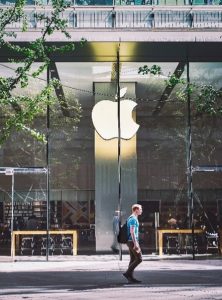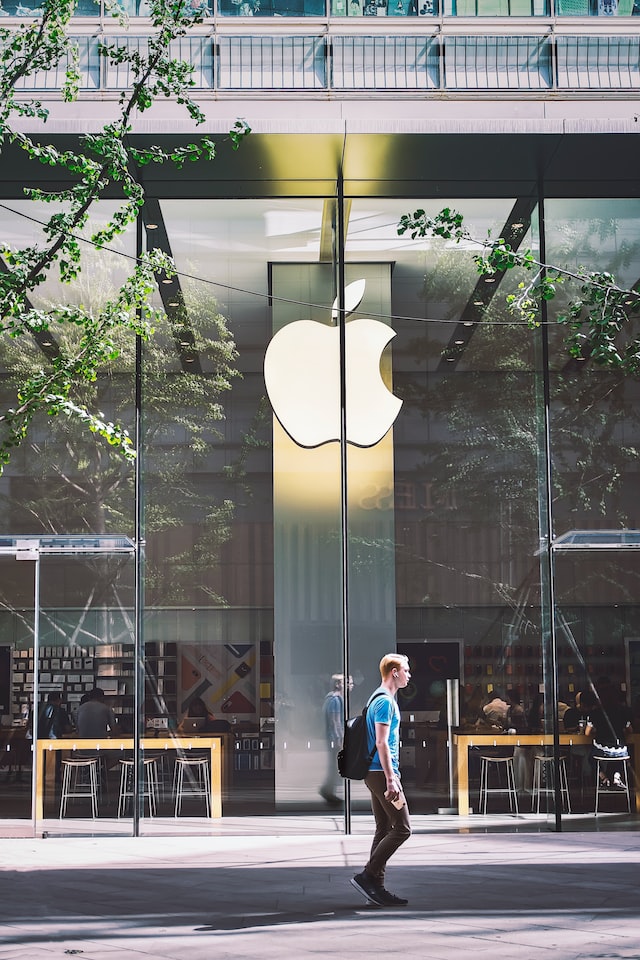Apple is one of the largest companies in the world with arguably the best brand recognition of any global company. No matter what country you are in, if you mention Apple most people would recognize the brand and its suite of Macintosh and iPhone products. You may even be using an Apple product right now to view this article.

This brand recognition is not just mere chance. Apple took great care making their products uniquely user-friendly, garnering them significant acclaim and a huge fan base. Apple also has a trademark for their apple logo and religiously protect this and other trademarks. From 2019 to 2021, Apple filed 215 trademark oppositions with the US Patent and Trademark Office. These oppositions were intended to prevent similar marks from getting legal protection. The applications that are subject to Apple’s opposition included marks that tried to benefit from Apple’s fame, but also marks with only passing or unintentional similarity. An example would be meal planning app Prepear’s logo.
When a Pear is an Apple?
Super Healthy Kids , a site used by parents and children for meal planning, developed a separate meal planning app called Prepear. In 2020, Apple objected to Prepear’s trademark federal application for their new pear-shaped logo, seeking to obtain nation-wide rights for their mark against others.
Apple alleged the Prepear logo is too similar to their trademarked images of an apple. The Prepear logo, while also a fruit, otherwise does not seem very similar to the Apple logo. The logo has green lines, a white center, and depicts a pear rather than an apple. In 2021, the lawsuit was settled by Prepear who removed a round line in the top leaf to a straight line. That’s right, Apple was filing oppositions against Prepear because one of the logo lines was too round.
This likely doesn’t make sense to the average reader, who might be thinking, “Why does Apple care about a rounded line?” The core issue is related to what makes a valid trademark and can be given legal protection. A trademark is valid if it is distinct and is used in goods or services in commerce. A trademark must identify and distinguish the related goods or services to be distinctive. A trademark can then be federally registered with the United States Patent and Trademark office, but this isn’t necessary for legal protection. The process entails an application, publication on the USPTO gazette for potential opposition, and cancellation/office action, if necessary, throughout the registration process. If there is no cancellation, then the trademark is renewed every ten years with confirmed commercial use. Registration helps support the distinct requirement of trademark protection.
When two trademarks get confused by consumers, it can lead to a claim of trademark infringement that may result in monetary damages or an injunction. The owner of a TM that is federally registered is presumed valid, which helps in winning a trademark infringement claim. In addition, a trademark owner – whether they own a registered mark or not – can oppose pending applications for marks that are likely to cause confusion, as well as dilute the value of a famous mark.
A trademark holder can also file a claim of dilution in the court system, separate if they can prove that the other mark dilutes their mark or tarnishes it in some way. Dilution does not require confusion but requires similarity to a famous mark, like that of Apple’s mark. Another approach to trademark protection is to file an opposition to new marks that get filed with the USPTO as Apple did against Prepear’s application. Trademark holders who fear that consumers will confuse their mark with a newly filed mark can file an opposition to the application. The USPTO also publishes these accepted applications for this purpose.
The Scope of Opposition
Apple seems to believe they have a monopoly on stemmed fruit and all related trademarks. Some commentors on IP law have accused Apple of bullying based on their heavy-handed tactics to protect their trademarks. Many small businesses are unable to fight against a company worth $3 Trillion market value with seemingly unlimited access to legal resources. Prepear is an example of a small company fighting against Apple. They ultimately changed their logo rather than risk further opposition and the related legal costs.
The curbside pickup company Citrus abandoned their trademark application after Apple’s opposition to the trademark. A tactic of Apple is to request extensions to oppose trademark applications. This drags out the approval process until they can convince the applicant to withdraw their application. Here, Apple requested two 60-day extensions to object to the Citrus trademark.
The word apple alone can trigger Apple’s filing of oppositions with the USPTO. Apple’s response to two trademark applications, Appleton Area school district and Big Apple Curry, had identical language and stated the same information about Apple’s value and its “extraordinary level of fame and consumer recognition”. It’s interesting to think whether a court would find a risk of dilution between Appleton Area school district and Apple. “Apple” is a registered trademark so it would be a valid basis for confusion. However, defendants can use the defense of descriptive fair use when using a common word. Appleton school district could likely raise such a defense. Also, Appleton likely has existed as a city and used their city’s name long before Apple received its trademark.
Bullying or Brand Protection?
Apple is justified in protecting its mark from potential dilution as one of the most valuable brands in the world. Other companies would likely capitalize on that fame if not for Apple’s legal team. Their legal team actively monitors new applications for trademark registration with the USPTO or possible infringing marks used in commercial markets. Without the active protection of its mark, Apple could lose the value of its strong brand as competitors use the same mark for their products. Apple could be tied to inferior quality products or scams. A recent YouTube video falsely claimed Apple was selling crypto currency. The fraudsters were utilizing multiple Apple trademarks such as their apple logo and the Apple name. This is a specific type of dilution called tarnishment, where a mark runs the risk of being tied to something harmful or unsavory in a market. YouTube quickly removed the video for violating its terms of services (likely because of a complaint) but similar advertisements could go unanswered if Apple did not file opposition to registration or file claims of dilution. Apple needs to protect its mark to avoid such connections tarnishing their mark and by extension their brand.
One such case involved a sexual health coach who tried to register a trademark of an apple in the shape of female genitalia. It is unclear why the applicant chose an apple for the trademark or if there was any intention to elicit a connection to the technology company. However there does not need to be intent to connect or confusion to file a notice of opposition based on tarnishment. Apple filed a notice of opposition to the registration of the mark. It made a very strong case that the mark was too similar to its mark. The application was ultimately refused by the USPTO. I think Apple has a valid argument of harm as they would not want their mark to be tied to sexual wellness or coaching. The connection between the marks is arguably very small, but the basis of dilution is that the infringing mark harms the senior mark. Apple was protecting its trademark from potential connections to sexual wellness or other themes that could affect how consumers perceive their products. Apple has a legitimate interest to avoid connections to products or services that would diminish that value.
The tactics of the Apple legal team have been shown to harm small businesses with marks that only have a passing resemblance to one of Apple’s many marks. Moreover, Apple has more than 1000 trademarks including every iteration of iPhone and more than 50 different word combinations with the word apple. With such an expansive list of trademarks and an effective legal team, Apple can file an opposition against any trademark that remotely resembles an Apple product. Apple has developed its intellectual property over 46 years and is set to continue applying for more trademarks. It begs the question: Will Apple’s trademark opposition continue to rise as they receive more trademarks? Will Apple continue to monopolize stemmed fruit logos, or will they finally let someone else have a bite of the apple?

Jacob Taylor
Associate Blogger
Loyola University Chicago School of Law, J.D. 2024
